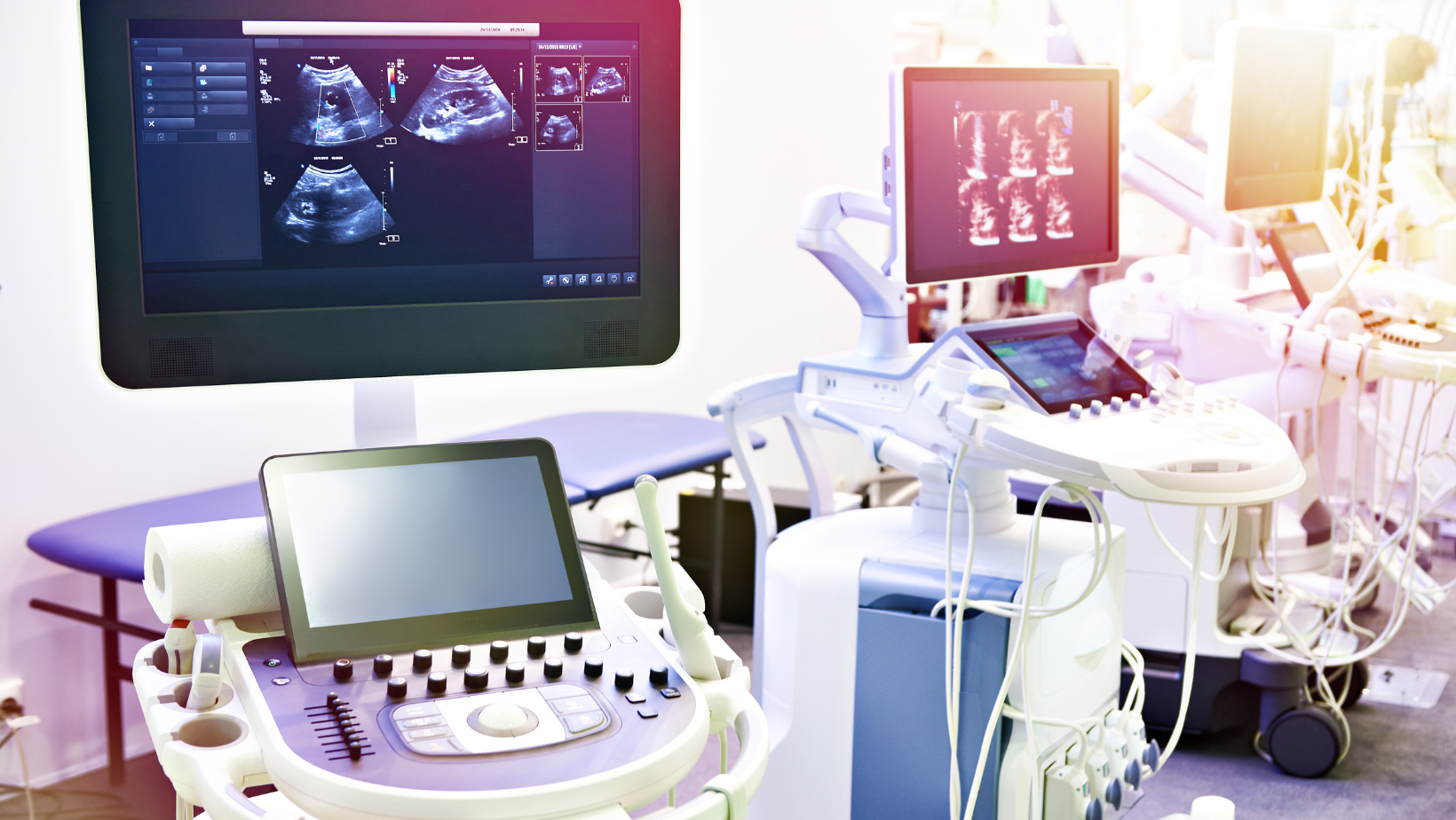Ultrasound machines are commonly used in clinics and hospitals to monitor foetal development, examine internal body structures, and diagnose conditions. They’re undoubtedly one of the most powerful diagnostic tools in the medical industry.
Ultrasound probes or transducer issues are among the most common problems in ultrasound machines. In this article, we summarise some of the most common ultrasound repairs.
The first sign of a damaged or malfunctioning machine is image dropout. This is often seen as lines or dark patches on the imaging screen. Image dropout is usually an indication of the following:
- Dead elements in the array
- Defective cables or connectors
- Bent or broken pins
If your ultrasound probe is malfunctioning or you’re experiencing image dropout, check and rule out the following common problems:
Crystal dropout – Your probe contains piezoelectric crystals which send and receive signals. If you drop your probe, these crystals often become misplaced, resulting in weak or patchy imaging.
Cable jacket damage – This is the flexible, protective rubber that surrounds your cables. Due to continuous strain and tension, this can become cracked or split, leading to connectivity issues.
Connector damage – Probe connectors are the piece of the probe that plugs into the ultrasound system. The connector is essentially a small plug made up of lots of pins. Due to excessive use, these pins can quickly become bent, impairing scanning ability.
Membrane replacement – The membrane is the soft silicone coating surrounding the probe (the part that comes into contact with the patient). Often, this degrades due to frequent contact with the skin, resulting in cracks, splits, and small tears.
Transducer lens replacement – Over time, hairline scratches can appear on the lens due to cleaning and too much use. Damage to the lens can affect its ability to work effectively and be a contamination risk for patients.
Strain relief – This problem usually occurs where the probe attaches to the cable. It’s easy to spot, with cracks and separation visible at the connector.
Although you may be experiencing some of these disruptive issues, this isn’t the end of the road for your ultrasound probe. Let one of our experienced, manufacturer-trained engineers inspect the probe and diagnose the problem. Once identified, we can recommend whether replacement or repair is the best option.
Speak to us regarding all your ultrasound probe repair needs
Imagex Medical offers expert repair, refurbishment, and replacement probe services for convex, phased array, linear, and TEE from almost all manufacturers.
Speak to our team today to discuss how we can help you.
